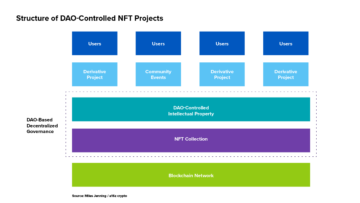Flexport’s co-CEO and founder, Ryan Petersen, chats with a16z Growth Editor Das Rush, in a fireside chat recorded at the a16z San Francisco office. They start with the question of why Ryan has chosen – of all the problem spaces to work on – improving the resiliency of the supply chain. They then cover just how complex the supply chain is in the era of ecommerce, evolving customer expectations, and ultimately how we can rearchitect our supply chain to meet them.
Transcript
TABLE OF CONTENTS
TABLE OF CONTENTS
Why a supply chain startup?
Das: I want to start at the beginning because you’ve chosen to dedicate a lot of your adult life to this mission of improving supply chain and global trade. Why that mission and that problem space?
Ryan: Thanks for having me here. There’s a couple angles that I approach this from. One is you look at the pie chart of GDP, and where is all the money spent? Where is all the activity in the economy? If you were to divide each of those slices by the number of hours of computer programming that have been applied, you would see that logistics is one of the biggest opportunities in the world. This is an incredibly important space. Trade is 47% of GDP, and yet, when I used to run a business importing motorcycles from Asia and selling them on the internet back in the early 2000s, late ’90s, it was just a nightmare.
Here’s something that’s really important. You can measure its importance by the number of dollars that are spent, and the size relative to GDP, but also it has been the backbone of the world economy. It’s the circulatory system of the world economy.
On many levels, I might argue that the shipping container was the most important invention of the 20th century. We’ve reduced the cost of shipping things by like 99%. We used to have to load these ships, backbreaking labor, hand carrying stuff onto the ships. Yet the shipping container was invented in the ’60s and deployed in the ’70s and really hasn’t changed much since then. Almost no innovation.
Anyone who’s tried to actively ship something across borders will tell you it’s a nightmare. Most small businesses never can do it. Only 3% of companies are buying and selling goods across borders right now. What are the odds that every other company has all their best vendors locally?
When you see something that’s this important and this hard and this many dollars being spent, it’s a good heat map for where to apply yourself. So, I started doing that 20 years ago.
When you see something that’s this important and this hard and this many dollars being spent, it’s a good heat map for where to apply yourself. -Ryan Petersen, Flexport Click To Tweet
Where Flexport started and how they expanded
Das: It’s interesting because you use this metaphor of the circulatory system, and all the pain points, which I think explains why people haven’t really tackled it before. It’s one of the hardest, most complex spaces to be in with the supply chain. Knowing that going in, how did you decide where to start? And then how have you thought about when and where to expand?
Ryan: We benefit a lot from my own naivete, my naïve optimism, I like to call it. I never worked in the industry. I was a customer of the industry shipping motorcycles, and later selling data to the industry in another company I started. I knew enough to be dangerous. I knew what the customer experience should be. I wanted this dashboard to give me visibility over all my freight, tell me what it was gonna cost, when things were gonna arrive, what all these weird terms mean. The industry still uses Viking English. We say bill of lading, instead of loading.
Das: I didn’t know that.
Ryan: There’s a lot of acronyms and code words, so I wanted a simple dashboard to teach me what all that stuff means. You might call it TurboTax for importing, and the place that we started was TurboTax-like. It was customs, which is where you pay your taxes to enter into the country. This was where most of the complicated paperwork lives, where the data lives. If you wanna clear a good through US Customs, you have to provide the commercial invoice and the bill of lading, packing lists, all this incredibly rich documentation, and ultimately structured data, that now lets you understand, “What is this company doing? What other services would they wanna buy?”
We started as a customs brokerage. It’s the stickiness. We say in the industry, “you date your freight forwarder, but you marry your customs broker.” It’s a compliance service. It’s not where you’re trying to cut costs. Freight is a commodity, and everyone wants to go with the cheapest freight provider that they can find. But customs you’re not trying to save money, you’re trying to make sure you are compliant, you aren’t breaking any rules. You want it to be your system of record where you are tracking everything for future audits. We started as a customs broker and then have expanded from there.
What we found pretty early, to my dismay, was that we had to do it all much sooner. I thought we’d just hang out as a custom broker for many years and be the best, most dialed-in custom broker. We found out as a startup customs brokerage, no one really trusted us in the beginning. We had to build our brand.
We were getting all the problem cases, where other freight forwarders didn’t do their customs. Red flag, right? Why is this person doing customs with me and freight with someone else? We had a lot of problem cases in the beginning. Quickly, we had to expand to offer freight services. Now we offer cargo insurance, financing for the goods. Our most important product is probably our order management product, which is where you place orders to your factories and convert those to shipments. Now we’ve got that transaction running through our rails, and we can offer you all those other services on top of that.
We found out as a startup customs brokerage, no one really trusted us in the beginning. We had to build our brand. -Ryan Petersen, Flexport Click To Tweet
Leadership changes and becoming a global logistics company
Das: From that initial expansion, you’ve reached this point where you are a global logistics company. I’ve heard you refer to Amazon as this company you really admire for how they handle the complexity of logistics. In fact, you have right now as your co-CEO, Dave Clark, who was formerly CEO of worldwide consumer at Amazon. Can you talk a little bit about that decision? How and why did you bring Dave in?
Ryan: I think Amazon’s the most interesting, important company in the world, frankly. They have figured out a lot around how to be entrepreneurial at scale. A lot of it comes from operating in relatively low-margin businesses that don’t have the luxury of just hiring lots of people and hoping that they do something interesting someday, like some of the other big tech companies. They have got to keep executing constantly and delivering innovation.
It’s pretty rare to see a big giant corporation that’s figured out how to really be a team of small companies, small business units. For me, it’s a wrinkle in the law of large numbers. The law of large numbers says, “you get really big, your growth rate slows down.” But if, in fact, all you are is an agglomeration of small companies, each one of those small units can grow really fast, then all of a sudden the whole thing can grow really fast.
I’ve been a big fan of Amazon for a long time, studying them from the outside. I’m learning about this. I really enjoy the process. I think it’s intellectually stimulating—how do you drive efficiency from a workforce? Studying things like the Toyota Production System or W. E. Deming. There’s a lot of great, almost deeply philosophical work about how to get operational excellence and drive quality. But I’m learning on the job, which there’s no excuse for that, given our industry. We need more experience.
I was looking for a strong number two that could immediately upgrade our ability to run really high quality and highly efficient operations on behalf of our customers. Naturally, Amazon’s the place I’m looking.
One of my secrets for recruiting, first of all, I do it myself when I’m doing exec recruiting. I don’t rely on outside search firms. I build my own list and track that in Google Sheets. Nothing fancy. I just go through my own network and ask everybody in my network who they would introduce me to just to learn from. I say, “Look, non-attachment to outcomes. I just wanna learn.” If each of those people gives me three people and each of those people gives me three people, you have kinda this cancerous growth that eventually you get to everybody.
The impact of ecommerce on the supply chain
Das: I was going to say talent supply chain. I want to circle back to this idea of what it’s going to take to become that world-best operational company. But I want to step back first and talk more generally about the supply chain. You’ve mentioned the admiration that you have for Amazon. Really, nobody epitomizes the rise of ecommerce more. What have you seen as the impact of ecommerce and the internet on the supply chain, and on how it works?
Ryan: You want to start with the customers, with all of us. The internet has really put us, you and me, and everybody else out there, in charge in a way that we’ve never seen before.
In the era of mass media, companies would only run a television ad for whatever product they were selling, and then they would just pump that down your throat. They only needed to have a limited number of SKUs, whatever was on television basically. Customers didn’t have a lot of choice. They could buy the Energizer or the Duracell. There were 2 choices for a battery, and they happened to be in the stores. The brands were in control. Those who could afford mass media were in control.
Now with the internet, there’s just a million choices. You have every possible brand of battery that’s out there. A battery’s probably a weird case, but for every product category, there’s a million choices. Everybody’s unique. You can get the thing that matches your own personal taste. You are in charge as well, in that they better have that product now. You’re not willing to wait a week.
In the Sears catalog era, you could order and you get it in three weeks. Well, you’re going to go out of business if you can’t deliver in two hours. That is a very different supply chain.
Companies that haven’t been able to run a supply chain that’s that responsive, that can have a wider assortment of choices, because we’re all unique and we want our choices, and have it sort of edge-cashed, to use an internet analogy, like a CDN… You want to have these goods close to the customer so that it can get there really, really fast.
In the old world, you could have one distribution center in the middle of the United States and distribute out to your store network from there. It didn’t have to be super responsive to customer demand. Customer demand was pretty predictable. They kind of always bought the same number of these batteries or whatever product. It didn’t have to be very agile.
The modern world, all of a sudden, there’s this proliferation of brands, and it all has to be stored close to the edges. Brands need to have multiple fulfillment centers. You need about five fulfillment centers to get two-day delivery nationwide. Next day, it’s more like 16 fulfillment centers. If you want to do same-day, you need one in almost every zip code. If you want to have two-hour delivery, that’s a really different configuration of supply chain.
To get to that world where you’re doing same day or next day delivery, you now need to load balance your inventory, because if you put too much inventory out there and it doesn’t sell, you’re going to go bankrupt. You’re sitting on all this working capital, this inventory, that’s not earning a return. Too little, and you lose the customer, and they’ll never come back. They buy your competitor’s brand. That’s the fundamental problem.
These logistics teams at the typical brand don’t even really know that that’s the problem they’re solving. They’re still used to a world where all they care about is the price of freight, and they want to buy the cheapest freight. That’s what they think their job is, when their job has become: how do I ensure a customer experience? How do I enable our sales and marketing to have the product in stock so that they can win those customers, be a growth engine, and a customer experience engine? And then how do they empower their CFO to not sit on too much inventory?
It’s a really different proposition, and frankly, most of the companies that we grew up with, these iconic brands, have been going bankrupt left and right. If you google “retail apocalypse” and just look at the number of companies that have failed that are iconic brands that we grew up with. It’s really sad actually. I don’t think it has to be that way.
We kind of have a dual purpose here. One is to help the new age of brands rise up and not need to hire this big logistics supply chain team who just pushes paper and all they care about is the price of freight, but to actually be empowered to solve these problems without hiring a big team, because you don’t need it anymore. You outsource that to the cloud. That’s one aspect of what we do. We help these small businesses grow really fast without the bureaucracy.
The other is how do you help these enterprise brands, these famous companies, transform themselves through a world of ecommerce and not die. Both of these are really important missions for us.
In the Sears catalog era, you could order and you get it in three weeks. Well, you’re going to go out of business if you can’t deliver in two hours. That is a very different supply chain. -Ryan Petersen, Flexport Click To Tweet
How the data flows, the supply chain goes
Das: In some sense, the second one I think can almost be harder. I’ve heard you say in the past that one of your goals is to make the supply chain as resilient and reliable as the power grid. It’s one thing to do that in normal times. It’s another thing to do it as you have a pandemic occurring, and a war in Ukraine, that are creating these delays and disruptions and shortages that we read about.
What will it take to get the supply chain to that point? In particular, because you’re talking about an architectural shift of the supply chain, what will it take to help those legacy players get there?
Ryan: The fundamental problem in supply chain is that we’re a chain. There’s many companies. In fact, on a typical transaction where we’re moving let’s say a pallet of goods, a cubic meter of goods, from a factory in pick a city – in Hangzhou, China to St. Louis, Missouri. On a transaction like that, you’ll have at least 12 companies that either touch the goods physically or are involved providing capital, like trade finance, or a letter of credit, cargo insurance, bank payments. At least 12, and as many as 20 companies, are involved in that transaction. You get information bottlenecks.
The goods bottlenecks are famous, and we see the ships waiting offshore and all the problems. But what’s happening in parallel is that the data’s not flowing. People at each stage are having to rekey data into a system, or not bothering, forwarding PDFs. We call it freight forwarding. I often joke it should be called freight email forwarding because you are just emailing attachments between all these different companies and trying to wrangle it. It leads to suboptimal decision making.
If you had perfect information, you would make sure the truck is waiting at the airport when the plane lands or at the seaport when the container shows up. You would get it all dialed in. Every truck would be scheduled appropriately, and you would be re-planning every five minutes so that if there’s any delay, you’re automatically generating a new plan and reallocating containers. Almost none of that can happen because there’s not a system. It’s 12 different companies, each running their own IT system, or in many cases, guys in warehouses with clipboards and no IT systems at all.
There’s 2 possible solutions. One is that a giant mega corporation owns all the assets door-to-door and creates 1 IT backbone for everybody. The other is to use ML and data science and make it in the interest of asset owners to come onto the platform.
Das: Almost like data is the new kind of killer asset.
Ryan: It should be. You should be able to really generate insights. The more transactions that are flowing, the smarter you get. How are we going to route this container? You know in advance, “Oh, you know what, there’s actually a bottleneck in LA right now. Let’s route it through Oakland.” Things like this that the industry hasn’t been that good at.
It was really interesting to watch last year, we had 100 container ships waiting off the port of LA, and only five waiting off the coast of Oakland here in the Bay. You have to go past Oakland to get to LA. Why don’t they stop and just unload the stuff? It’s hard. They don’t have the data. They’re not able to communicate in real time, make agile decisions, etc. But that’s going to be the future, actually using tech and using data to route assets in a smarter way.
Das: I could easily stay and talk all day about supply chain, but I know that we are at time now. Thank you so much, Ryan, for coming in and talking to us today.
Ryan: My pleasure. My pleasure. Thanks for having me.
The goods bottlenecks are famous, and we see the ships waiting offshore and all the problems. But what’s happening in parallel is that the data’s not flowing. -Ryan Petersen, Flexport Click To Tweet
***
The views expressed here are those of the individual AH Capital Management, L.L.C. (“a16z”) personnel quoted and are not the views of a16z or its affiliates. Certain information contained in here has been obtained from third-party sources, including from portfolio companies of funds managed by a16z. While taken from sources believed to be reliable, a16z has not independently verified such information and makes no representations about the enduring accuracy of the information or its appropriateness for a given situation. In addition, this content may include third-party advertisements; a16z has not reviewed such advertisements and does not endorse any advertising content contained therein.
This content is provided for informational purposes only, and should not be relied upon as legal, business, investment, or tax advice. You should consult your own advisers as to those matters. References to any securities or digital assets are for illustrative purposes only, and do not constitute an investment recommendation or offer to provide investment advisory services. Furthermore, this content is not directed at nor intended for use by any investors or prospective investors, and may not under any circumstances be relied upon when making a decision to invest in any fund managed by a16z. (An offering to invest in an a16z fund will be made only by the private placement memorandum, subscription agreement, and other relevant documentation of any such fund and should be read in their entirety.) Any investments or portfolio companies mentioned, referred to, or described are not representative of all investments in vehicles managed by a16z, and there can be no assurance that the investments will be profitable or that other investments made in the future will have similar characteristics or results. A list of investments made by funds managed by Andreessen Horowitz (excluding investments for which the issuer has not provided permission for a16z to disclose publicly as well as unannounced investments in publicly traded digital assets) is available at https://a16z.com/investments/.
Charts and graphs provided within are for informational purposes solely and should not be relied upon when making any investment decision. Past performance is not indicative of future results. The content speaks only as of the date indicated. Any projections, estimates, forecasts, targets, prospects, and/or opinions expressed in these materials are subject to change without notice and may differ or be contrary to opinions expressed by others. Please see https://a16z.com/disclosures for additional important information.
- and infrastructure
- Andreessen Horowitz
- Bitcoin
- blockchain
- blockchain compliance
- blockchain conference
- coinbase
- coingenius
- Consensus
- crypto conference
- crypto mining
- cryptocurrency
- decentralized
- DeFi
- Digital Assets
- ecommerce
- ethereum
- founder/maker stories
- machine learning
- non fungible token
- plato
- plato ai
- Plato Data Intelligence
- Platoblockchain
- PlatoData
- platogaming
- Polygon
- proof of stake
- Supply chains
- supply chains, logistics, and infrastructure
- W3
- zephyrnet










